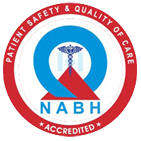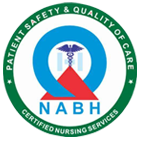DEPARTMENT OF OPHTHALMOLOGY:
We provide state of the art comprehensive eye care for adults and children.
The strengths of the department are its commitment to world-class standards, personalized care and service-oriented team. Specialty eye care is provided, at prices that are within the reach of everyone.
OUTPATIENT SERVICES:
All the modern equipments are available including autorefractometer, slit lamp biomicroscope, applanation tonometer, gonioscope etc
SURGICAL PROCEDURES:
- Day-care as well as night-stay facilities
- Medi claim insurance coverage
- TPA cashless surgical services
- Fixed surgical package rates
- General ward, semiprivate and single room cabin facilities
OPERATION THEATRE:
- We have a sterilization unit equipped with ETO.
- There are ultra-modern operation theatres with laminar airflow and HEPA filters.
- High end zeiss microscope and other support infrastructure are available
Cataract surgery
- State-of-the-art phacoemulsification and implantation of a foldable Intraocular Lens.
- Manual small incision cataract surgery.
- There is very little discomfort or inconvenience and patients can usually return home few hours after surgery
- Premium IOLs like Aspheric IOL, Aspheric-with-blue light filtering IOLs, Toric IOLs and Multifocal IOLs are available
Glaucoma surgery:
- Trabeculectomy
- Cataract surgery in combination with Trabeculectomy
Oculoplastics procedures:
- Dacryocystorhinostomy(DCR) with or without intubation,
- Ectropion and Entropion correction,
- Pterygium with autograft.
OPTICAL SERVICES:
- Accurate Dispensing of spectacle power
- Optically correct spectacle frames
- Specialized spectacles for computer work
- Progressive lenses
- Unbreakable lenses for children
- Disposable Contact Lenses and Accessories
- Occlusion patches for Amblyopia treatment
KNOW YOUR EYE
CATARARCT
The lens is the part of the eye that helps focus light on the retina. The retina is the eye's light-sensitive layer that sends visual signals to the brain. In a normal eye, light passes through the lens and gets focused on the retina. To help produce a sharp image, the lens must remain clear. Cataract is defined as opacification or clouding of the natural clear lens that results in visual problems
The most common symptoms of a cataract are:
| - Cloudy or blurry vision. |
| - Glare from lamps, headlights or very bright sunlight; or a halo around lights. |
| - Colors seem faded. |
| - Poor night vision. |
| - Double or multiple vision |
| - Frequent changes in the power of your eyeglasses. |
However these symptoms can also be a sign of other eye problems. If you have any of these symptoms, it is essential to have a check up with an Ophthalmologist.
In the early stages, you can improve your vision by changing your glasses. But once the cataract progresses, changing glasses will not help. A cataract may develop slowly over several years or rapidly within months. Often the other eye will also be affected, but it may not happen at the same time. There are no medications, eye drops, or dietary restrictions that can cure or prevent cataract formation. If the cataract interferes with your regular activities, the only solution is surgery.
In cataract surgery your natural clouded lens is replaced by an artificial intraocular lens (IOL), which helps incoming light rays to be focused properly. Your new lens should restore vision to nearly what it was earlier, though you may need to wear glasses.
Surgical Techniques
Several techniques are used for removing cataracts.
Phacoemulsification:
In this method a tiny instrument is inserted through a very small incision. The instrument uses ultrasound vibrations to break the cataract into fine pieces, which are gently suctioned out. The new lens is then inserted into the eye. Usually no stitches are required to close the incision. This minimal surgery allows faster and safer healing, hastening your return to normal activity.
Small Incision Cataract Surgery (SICS):
This is a new technique where the cataract is removed manually through a small incision. The small incision heals fast, enabling you to recover quickly.
Post Operative Care:
| |
|
| |
|
| |
- Do not lift heavy weights
|
| |
- Do not allow the eye to get injured- the eye shield is meant to protect the eye from physical hurt.
|
| |
- Avoid too many visitors for fear of contacting infection- especially avoids visitors with conjunctivitis, cold etc.
|
| |
- Do not play with children since there is possibility of getting hurt in the eye.
|
| |
- Do not strain at toilet. If needed please take laxative.
|
| |
|
| |
- Cigarette smoking should be avoided.
|
| |
- Alcoholic beverages are best avoided.
|
| |
- Avoid using handkerchief to mop the eye. Use sterile tissue only.
|
| |
|
|
General instructions for post operative patients after eye surgery
| |
|
| |
- Eye shield: Please use eye shield for protection when you sleep. You may use dark glasses during daytime. Please wash the eye shield and glasses with soap and water each day and dry the same before use.
|
| |
- Washing the face: Cleaning of the operated eye will be as per the instructions given by the doctor/ nurse. The rest of the face can be mopped with a clean and wet cloth. Avoid splashing water into the operated eye.
|
| |
- Shaving: Shaving is permitted. But avoid splashing water after shaving. Instead, clean with a wet cloth.
|
| |
- Bathing: You can bathe below neck from the first postoperative day itself. But avoid head bath till advised.
|
| |
- Use of facial cosmetics: Avoid cosmetics to the eye such as mascara, eye liners etc for at least 4 weeks.
|
| |
- Physical activity: Activities such as walking, talking, TV viewing can be resumed immediately after surgery. However, Jogging, swimming, gardening, contact sports, etc may have to be avoided until 4-6 weeks after surgery.
|
| |
- Driving: Avoid driving till your surgeon gives you permission.
|
| |
- Joining back duties: Usually you will be allowed to join your duties by 4-6 weeks after surgery depending upon the surgery. You may have to check with your doctor regards to the exact date of joining duty.
|
| |
- You may resume your sexual life a week or two after the surgery.
|
| |
- The following symptoms may be expected after most surgeries: Some amount of redness, watering, foreign body sensation, and glare are common. The severity varies with the type of surgery. These symptoms will reduce with time and usually disappear by 4-6 weeks.
|
| |
- If you have any worsening of the symptoms and specifically if there is increasing redness, pain or decreased vision please report as emergency to the mission hospital
|
| |
|
| |
|
Procedure for cleaning the eye:
The operated eye needs to be cleaned at least twice a day.
- The attendant performing this task should wash the hands with soap and water and dry them with a clean towel.
|
- You may use the disposable tissue supplied at the hospital for this purpose. Alternately you may place cotton in a clean vessel cover it with a lid for 10 minutes, let it cool down, take the cotton out, squeeze the excess water and use the same to clean.
|
- Cleaning the lower lid is done by asking the patient to look up and wiping all the secretions sticking to the lower lid margin.
|
- Cleaning the upper lid is done by asking the patient to look down and doing similar procedure.
|
- Similarly the outer and inner corners of the eye are cleaned.
|
- Once the margins and corners are cleaned, the eye drops can be instilled and then the surrounding areas can also be cleaned.
|
Instillation of the eye drops:
- The attendant should wash his/ her hands with soap and water.
|
- The cap of the eyedropper bottle is opened carefully without contaminating the tip of the nozzle.
|
- Pull the lower lid and place the drop between the eyeball and the lid by squeezing the bottle or cap as the case may be.
|
- Wipe away excess medicine that may trickle out.
|
- The eyes should be kept closed for a period of 5 minutes after the drop is instilled.
|




